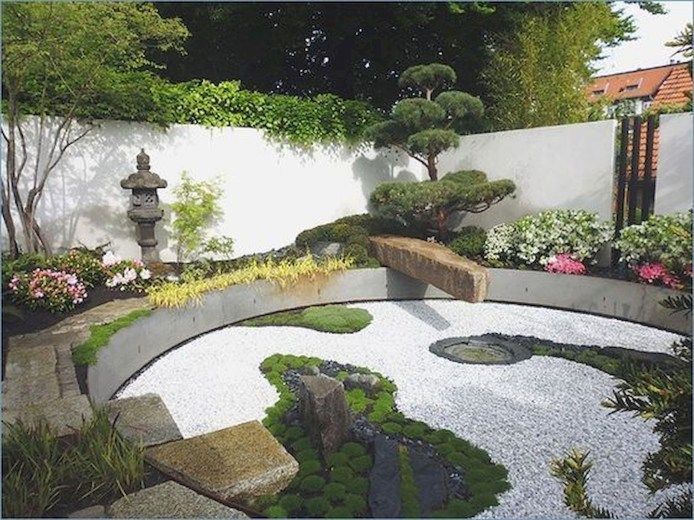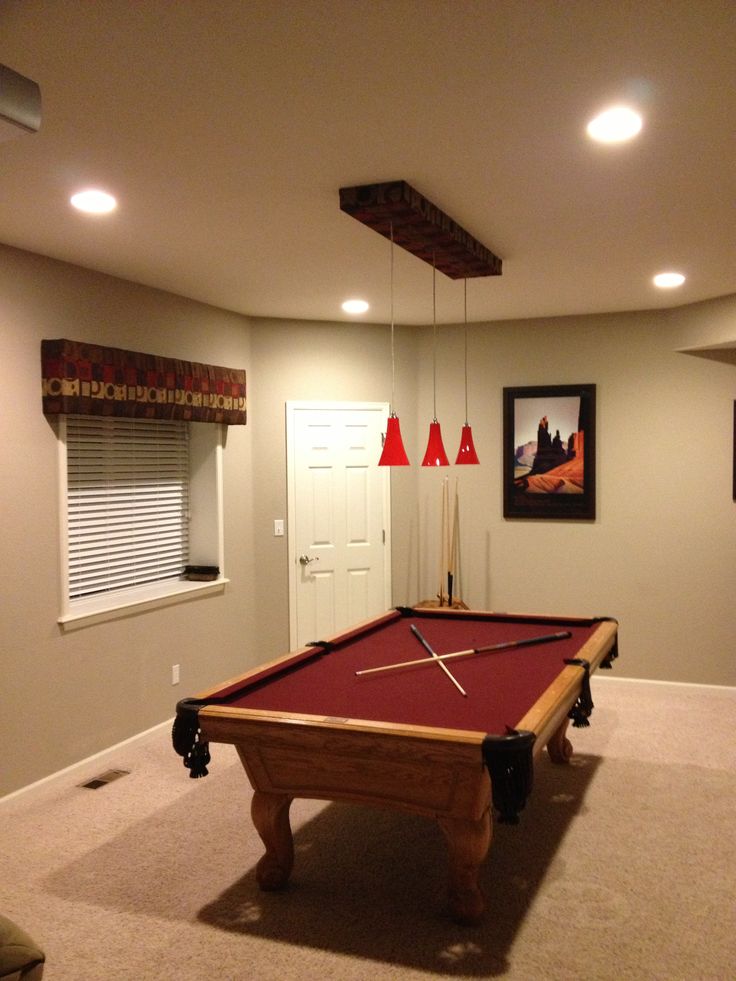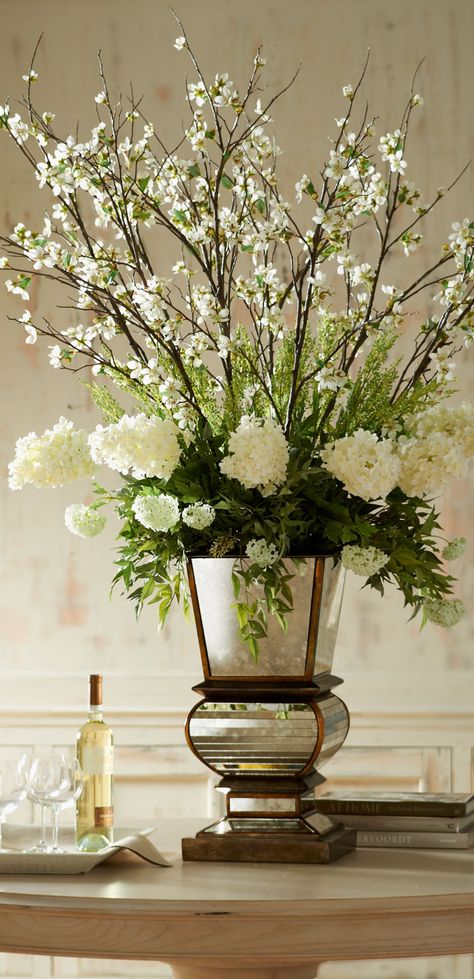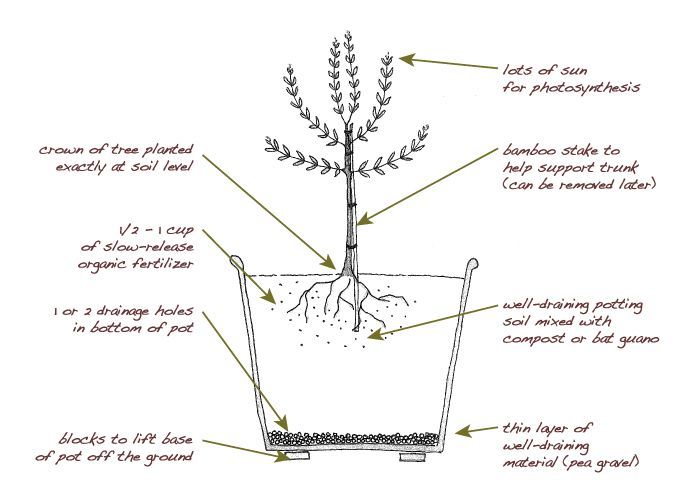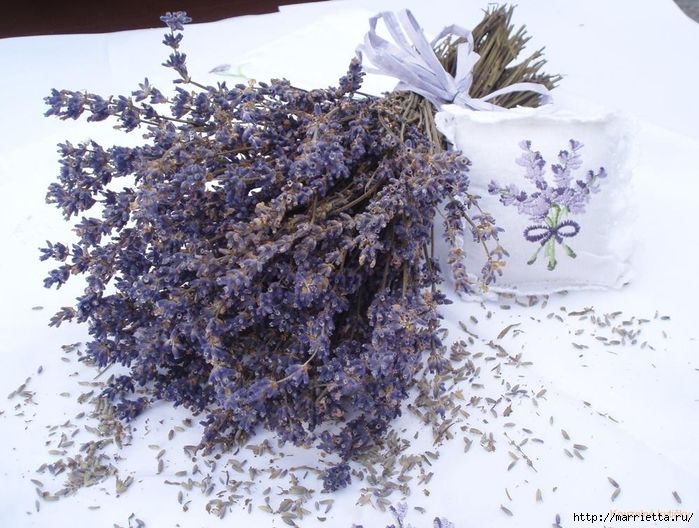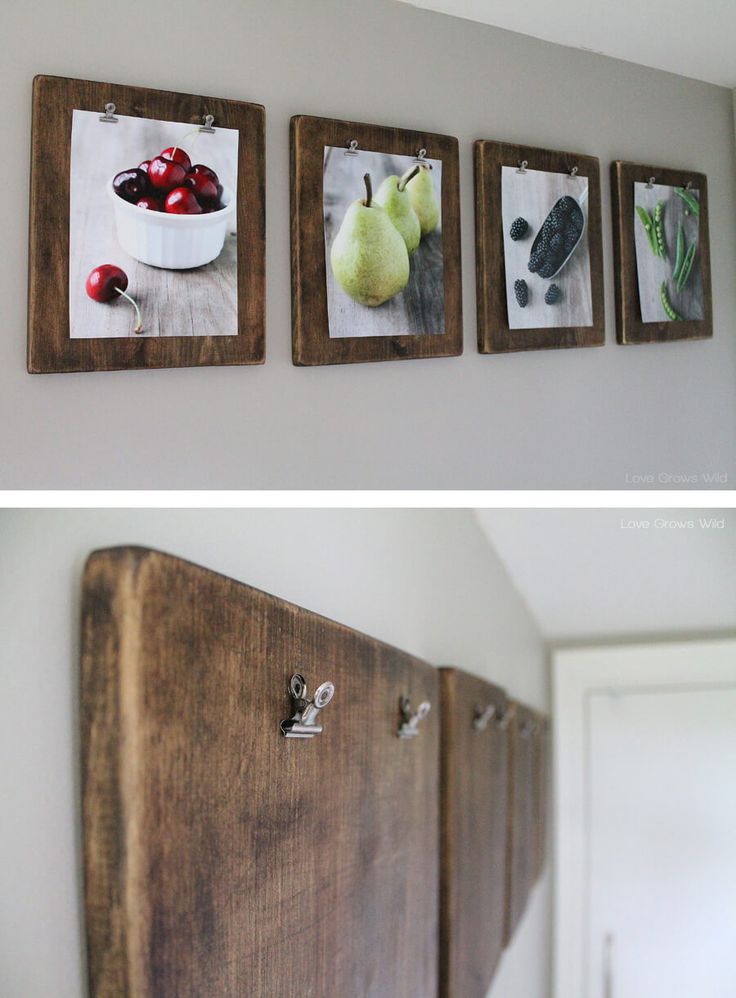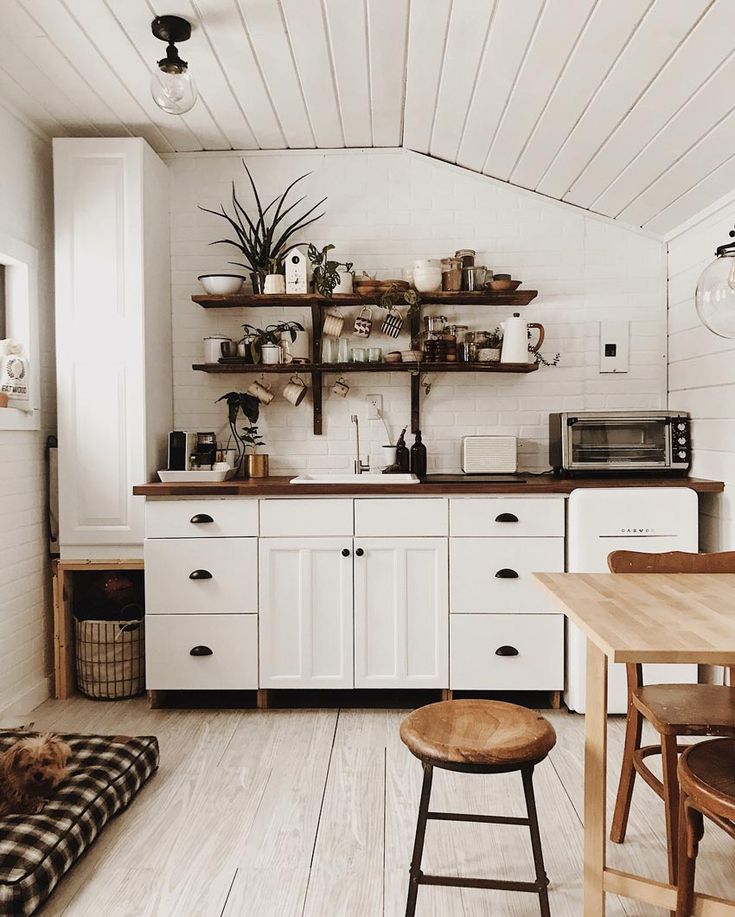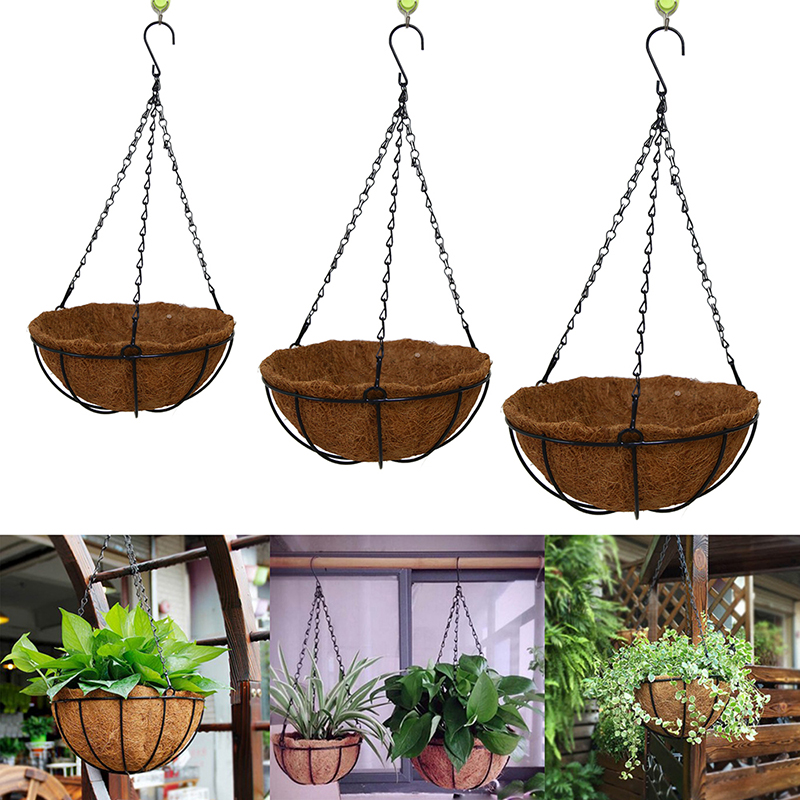Late blooming summer flowers
10 Perennials for Late-Summer and Fall Color
Keep the color show going in your backyard right up until frost. Here’s a peek at 10 of our favorite late-season bloomers. By Doug Jimerson
Nippon Daisy
Often called Montauk Daisy, Nippon Daisy is prized for its late-in-the-season explosion of perky, white flowers. This easy-care plant grows 24 to 36 inches tall, and thrives in full sun and well-drained soil. Both the leaves and flowers of Nippon daisy are frost tolerant and will retain their color right up until a hard freeze. The nectar-rich blooms will also lure colorful butterflies to your garden. Nippon daisy is deer-resistant, too. Zones 5-9
Want to learn more about perennial gardening? Sign up for our free email course!
Goldenrod
Let the bright, yellow blooms of goldenrod gild your late-season garden with color. Heat- and drought-tolerant, goldenrod is an easy-care native that’s been given a modern makeover. Newer hybrids are a great choice for your garden because they’re more compact and produce more flowers than their roadside cousins. Hybrid goldenrod grows 18 to 24 inches tall and is highly attractive to hungry bees and butterflies. By the way, it’s a myth that goldenrod causes hay fever. Ragweed, which blooms at the same time as goldenrod, is generally the sneeze-inducing culprit. Zones 3-9
In photo: Solidago 'Little Lemon'
Joe Pye Weed
Perennials don’t get much tougher than Joe Pye weed. In fact, you can probably drive a truck over this rugged native and not phase it a bit. Joe Pye Weed is a big plant (although dwarf varieties that grow 3 feet tall are available) often reaching 6 to 7 feet tall, so give it plenty of room to stretch out. It loves rich, slightly moist soil and produces handsome burgundy-green foliage topped with large showy heads of whitish-purple flowers in the late summer and fall. Butterflies and bees love the nectar rich flowers. Joe Pye weed can be a bit of a bully, so plant it where it won’t encroach on its neighbors. Zones 4-10
In photo: Eupatorium 'Baby Joe'
Discover more top plants to attract butterflies to your garden.
Helenium
For gorgeous fall color you can’t beat helenium. Year after year, this super- easy native perennial produces masses of pretty, daisy-like flowers in shades of yellow, orange, red, and bi-color. These sun-loving plants grow 3 to 4 feet tall and look terrific even when rainfall is scarce. Occasionally called sneezeweed, helenium does not cause hay fever. It just happens to bloom in the same season as ragweed so it often takes the blame. Helenium will also attract important pollinating insects to your garden. Deer, however, avoid the plant. Zones 3-8
In photo: Helenium 'Coppelia'
Oriental Lily
Enjoy color and fragrance in your fall garden with Oriental lilies. These exotic-looking charmers grow 4 to 6 feet tall and produce magnificent stalks of huge, star-shape blooms. Colors include pink, rose, red, cream, white, yellow, and orange; most flowers are also generously splashed with darker stripes and spots. Oriental lilies need a sunny to partially sunny spot with well-drained soil that has plenty of organic matter mixed in. It may take a year or two to form a big impressive clump, but these super plants are worth the wait. Zones 5-9
In photo: Lilium 'Farolito'
Chrysanthemum
When you think about fall color, chrysanthemums are probably the first plants that come to mind. That’s because these versatile perennials are available in an almost unlimited selection of colors, sizes, and flower forms that look amazing planted by themselves or mixed with other flowers. Use chrysanthemums in containers or directly in the landscape. All they require is a sunny location and a drink whenever the surface of the soil begins to dry. In colder climates cover newly planted chrysanthemums with a few inches of shredded leaves or compost after the foliage dies. This protects them during their first winter in the ground. Zones 4-10
In photo: Orange Chrysanthemum
Japanese anemone
Borne on tall, elegant stems, the pink or white flowers of Japanese anemone are a welcome treat in the late-summer garden. Growing 2 to 4 feet high, Japanese anemone mingles well with other fall bloomers such as asters and chrysanthemums. The plants prefer full sun, but will also bloom in partial shade. They do best in rich, cool, organic soil so mulch the plants with shredded leaves or compost. Japanese anemone spreads by underground runners, so keep an eye on your plants to be sure they aren’t crowding nearby perennials. Zones 4-8
In photo: Anemone 'Honorine Jobert'
Aster
Make asters the backbone of your fall border. These reliable perennials form dense mounds of white, purple, pink, or blue flowers. Asters come in a variety of shapes and sizes and, depending on variety, can grow 1 to 4 feet tall. This makes them versatile enough to be planted anywhere, from a container to the back of the border. These fall beauties are also extremely attractive to butterflies, particularly hungry Monarchs looking for a quick snack while on their fall migration. Asters need full sun and well-drained soil. Zones 4-7
In photo: Aster 'Purple Viking'
Balloon Flower
Take your fall flower garden to new heights with balloon flower. Named for its eye-catching balloon-shape flower buds, balloon flower provides a burst of welcome color in the late-summer garden. An easy-care perennial, balloon flower, which also goes by its genus name platycodon, develops quantities of dark blue, pink, or white flowers. The plants grow 12 to 20 inches tall and thrive in any sunny or partially sunny location. Balloon flower also makes a wonderful cut flower. And, it’s deer resistant, too! Zones 3-8
In photo: Platycodon 'Sentimental Blue'
Sedum
If you’re a “plant it and forget it” style of gardener, you definitely need to put sedum on your shopping list. These rugged plants are virtually indestructible and come in a wide variety of shapes, sizes, and colors. Sedums have fleshy foliage that makes them super drought tolerant. Just plant them in a sunny spot and stand back. Taller varieties, that can grow 24 to 36 inches tall, produce large flat heads of pink or red flowers through the late summer and fall. The nectar rich blooms also attract scores of bees, butterflies and other pollinators. Zones 3-8
In photo: Sedum 'Autumn Charm'
Have Questions?
Check out our Help Center for answers to commonly asked questions. If you don't see yours, you can easily email us to get the answers you're looking for!
16 best blooms for color into fall |
Include plenty of late summer flowers in your planting plans to continue the display of colorful blooms well into fall.
Often gardens can start to look a little lacklustre later in the summer months when the riot of late spring and early summer choices have faded. But by including in your flower bed ideas plenty of high and late summer choices that cope well with the weather, you can keep the color going in your garden all summer long.
It is never too early to start planning your late summer flowers as whether they are grown from seed or are summer bulbs, they will need to be planted many months ahead.
(Image credit: Leigh Clapp)
Late summer flowers to plant
There is a plethora of brilliant late summer flowers to select from.
'Including a handful of ultra-reliable, perennial workhorses is a great starting point,’ advises Richard Wilson, horticulturalist at RHS Garden Rosemoor.
‘These will keep flowering all summer long and with the application of a few tricks of the trade, such as regular deadheading, will endure well into fall. Don’t forget to tie in and support your taller, late-summer perennials to help prevent them from flopping over or being damaged by the wind,’ he adds.
Here, gardening experts share their favorite flowers that they wouldn’t be without through summer.
1. Canna lily
(Image credit: Leigh clapp)
'Canna are invaluable for late summer pizzazz and before they flower, their leaves are equally eye-catching. They are not hardy, so need protection in winter,' explains award-winning garden designer Juliet Sargeant .
These tender perennials add color and interest to borders or as container gardening ideas. Water well in dry spells and deadhead to encourage further flowering.
They are a wonderful choice if you want to create a tropical garden feel.
2. Penstemon
(Image credit: Leigh Clapp)
‘Penstemons are some of the longest flowering and reliable perennials. There is a wide range of colours. Wait until after the frosts to cut them back to ground level,' explains Juliet Sargeant.
These late summer flowers grow best in fertile, well-drained soil in a fully sunny protected spot.
If you learn how to divide plants you can multiply the numbers of these popular perennials to fill your garden with more color each summer.
3. Rudbeckia fulgida var. ‘Goldsturm’
(Image credit: Leigh Clapp)
'Rudbeckias are the late comers to the garden party, bringing their bright yellow disco light to the garden in late summer. These late summer flowers are very tough and help bring one last dance to the garden before fall,' says garden designer Lee Burkhill of The Garden Ninja .
They are fantastic as flowers that attract bees and pollinators with the pollen they contain. 'They will pretty much grow anywhere and work well to add a pop of color to a prairie style border,' says Lee.
Rudbekias thrive in sun or part shade, in fertile soil that holds moisture.
4. Jacob's ladder – Polemonium caeruleum
(Image credit: RHS/ Graham Titchmarsh)
Polemonium caeruleum, also known as Jacob’s Ladder, 'is one of the true blues of the garden, and another fantastically floriferous flower to add contrast to other borders,' says Lee Burkhill.
'Rich in pollen, it is a fuss free plant, especially on chalky soils or alkaline heavy gardens. These plate summer flowers are easily grown from seed with a relatively quick time to establish with flowers in year two onwards,' says Lee.
Grow in sun or part shade in fertile, moist but well-drained soil. They can flower from spring up to late summer.
5. Pot marigold – calendula officinalis
(Image credit: Future)
The vibrant flowers of the pot marigold offer great benefits for companion planting alongside certain fruits and vegetables. 'Both plant and flower emit an aroma that I can only describe as surgical iodine, which helps deter pests like green aphids when these late summer flowers are grown next to tomatoes, says garden writer and photographer Rekha Mistry.
The fast growing annual or biennial happily flowers until the first frosts, so make sure you know when to plant marigolds to enjoy a long season of color.
6. Borage
(Image credit: Lucy Kral/Unsplash)
‘This is a beautiful star flower that naturalizes wherever it grows. When you're planning a kitchen garden, grow several plants at either end to allow pollinators to remain in the kitchen garden aiding successful pollination of vegetable flowers as they move from one end to the other. Borage flowers are edible too, with a fresh cucumber flavor when added to salads and cocktail drinks, says Rekha.
Direct sow in spring, as they don’t like their roots disturbed.
7. Cosmos
(Image credit: Thompson & Morgan)
‘Cosmos produces masses of large pink daisy-like flowers and can grow up to 1m,' explains Charlie Bloom, garden designer and kitchen gardener at Riverhill Himalayan Gardens .
When you know how to grow cosmos you will enjoy these pretty annual blooms that form clouds of color. Deadhead spent flowers but leave some to self-seed.
8. Annual mallow – Malope trifida ‘Vulcan’
(Image credit: Leigh Clapp)
'Malope produces the deepest magenta flowers, off-set by lime green stems. It is easy to produce from seed with no complicated instructions, just dirt, light and water,' explains Charlie Bloom.
A hardy annual, place in a full sun position in moist, well-drained soil. Encourage lateral growth and further flowering by picking some of the flowers.
This late summer flower will keep blooming into fall.
9. Dahlias
(Image credit: Dahlia ‘Thomas Edison’ available from sarahraven.com / photograph Jonathan Buckley)
It's worth learning how to grow dahlias as there are so many varieties that you can mix them beautifully with harmonious tones or as a striking contrast.
‘We have lots of dahlias in our garden but Dahlia 'Thomas Edison' is a stand out favorite. It has a spectacularly intense magenta color and its bloom of nearly 20cm across is carried on strong, dark stems, which makes it a fabulous cut flower for the house,' says award winning garden designer and broadcaster Chris Beardshaw .
Deadhead dahlias to prolong their flowering.
10. Anthemis 'Tetworth'
(Image credit: Beth Chatto Garden and Plants)
‘Carrying daisy flowers all summer long, anthemis makes a great edge of border plant that is tall enough to offer support to other border plants,' explains Chris Beardshaw.
With an upright habit and soft grey cut leaves this useful late summer flower works well as a foil against other colors, and in a naturalistic planting design.
It needs full sun, with well-drained soil that doesn’t get waterlogged.
11. Astrantia
(Image credit: Leigh Clapp)
'There are so many wonderful astrantia that it is hard to single out just one,' says renowned garden designer, author and founder of the English Gardening School Rosemary Alexander.
'Astrantia ‘Large White’ is a strong grower with rayed greenish-pink flowers reaching about 75cm, and flowers from June to September. I usually cut mine back after flowering and it performs again until the first frosts,' Rosemary adds.
These late summer flowers grow best in moisture retentive soil and light shade. Keep deadheading to encourage more flowering.
12. Mexican sunflower – Tithonia rotundifolia ‘Red Torch’
(Image credit: Leigh Clapp)
The Mexican sunflower, Tithonia rotundifolia is a superb plant reaching 3 to 4 feet (1-1.2m).
'Forming large, compact plants with orange-scarlet flowers, it flowers freely from July to October and prefers full sun,' says Rosemary Alexander.
It's worth knowing when to plant sunflower seeds so that you can enjoy these versatile late summer flowers in many styles of garden, from tropical to cottage garden borders.
13. Agastache ‘Black Adder’
(Image credit: RHS)
'A member of the hyssop family, this dark, giant cultivar is the most hardy and has edible flowers that go on for months and are always covered in bees. This perennial is resistant to drought and also happy in clay, it makes a great vertical accent,' says award-winning landscape architect Marian Boswell .
Plant in moist but well-drained soil in full sun, and avoid shade and wet soil. As well as being a favorite of bees, these are wonderful flowers to attract butterflies.
14. Milk parsley – Selinum wallichianum
(Image credit: Selinum wallichianum available from sarahraven.com photograph Jonathan Buckley)
‘With masses of starry parsley heads above pretty, fern-like, cut leaves, Selinum wallichianum is a delightful froth of bee fodder for any border. Its red stems look wonderful with Sanguisorba ‘Tanna’ bobbing through. A medicinal plant for permaculture gardening,' says Marian Boswell.
This late summer flower, which is in bloom from mid summer to fall, likes moist, well-drained soil in full sun.
15. Salvia 'Blue Monday'
(Image credit: salvia blue monday available from sarahraven. com photograph Jonathan Buckley)
'Salvias are excellent to grow as a foliage-flower, to form the backdrop and foil to a flamboyant crew of dahlias and cosmos,' explains plantswoman Sarah Raven .
'Salvia viridis ‘Blue Monday’ is a brilliantly colored and invaluable foliage annual, which can be used like lavender for edging paths,' she adds.
'Salvias are easy to grow from seed scattered into a seed tray or just direct into the soil for flowers within eight weeks.'
16. Turkish sage – Phlomis russeliana
(Image credit: RHS)
'This sage has soft yellow flowers all summer and spreads to form a large clump of soft silvery leaves. Be prepared to reduce the clump in size each year as otherwise it can become quite invasive,' advises award-winning garden designer and nurseryman, Roger Platts .
'The soft color combination works well with many summer planting garden color schemes and the dead flower heads remain attractive on the top of the foliage all winter. A very useful and underrated plant,' says Roger.
What flowers are good for late summer/ early fall?
There are many flowers that are good for late summer into early fall.
Horticulturist Richard Wilson lists some of his favorites:
'The coneflower is a veritable ray of sunshine in your border with dark eyes and stunning yellow petals. No garden is complete without a sunflower, space allowing. Verbena bonariensis is at its best dotted throughout a planted area, providing beacons of clustered purple.
'Sedum is not always on gardeners’ radars, but Hylotelephium 'Herbstfreude' is an amazing late season burst of nectar rich, heavy pink pom-poms. No late season color list would be complete without the ever-favorite Michaelmas daisies, or aster,' Richard adds.
Which flowers last longest in summer?
'A champion among the many hundreds of hardy geranium cultivars, Geranium ‘Rozanne’ will fill a border frontage with clouds of iridescent blue, and a late summer trim will encourage regrowth and flowers afresh,' horticulturalist Richard Wilson says.
Many of the late summer flowers listed above will also last through summer, including milk parsley, malope, borage, as well as common myrtle, Turkish sage to name but a few.
15 ornamental plants, flowering until late autumn
The onset of cold autumn does not mean the withering of bright flower beds. In order to admire an attractive garden until the very frosts, you need to "settle" late flowers in it. What exactly? We will tell you what blooms in October and November.
Plants that bloom in late autumn are especially valuable for gardeners, because after leaf fall, nothing but them decorates a gray flower garden.
Flowers blooming in October
These plants are not afraid of the first night frosts. Bright colors in the garden will drive away the autumn depression.
Ageratum
This member of the Aster family has another common name - "long flower". And this is no accident. Fluffy pom-pom-like ageratum flowers bloom until late autumn and add blue, purple, white and pink colors to the garden.
Perennial aster
Unpretentious "Octobers" are not afraid of frost and feel great even during the first snowfall. With proper care, perennial asters of late varieties continue to decorate the flower bed even in the first half of November.
Marigold
Marigolds were brought to Europe in the 16th century. In Russia, these were the first overseas flowers. Flower baskets of cream, yellow, orange and brown color exude a strong spicy smell, and when dried and infused, they are a healing remedy for colds, asthma, bronchitis, stomatitis. Marigolds bloom from June to mid-autumn.
Tuberous begonia
This beauty with lush flowers in calm areas can bloom until mid-October. And if you grow begonia in a hanging planter, then with the onset of cold weather it can be transferred to a veranda or winter garden. And then she will delight you with her attractive appearance until November.
Bonar Verbena, Argentinian, Buenos Aires or high verbena
Bonar Verbena is not very similar in appearance to other members of the Verbena family. Its almost leafless stems (up to 1.5 m high) with small lilac-violet flowers, collected in umbellate inflorescences, fit perfectly into the autumn flower garden. Most often, this verbena is grown as an annual: in May, seedlings are planted in open ground, and from August to October, the plant decorates the flower bed with delicate flowers and safely tolerates short-term autumn frosts.
Gazania, or Gazania
This undersized flower (up to 30 cm high) is often referred to as the African daisy, but its flowers are more like a gerbera. They are single baskets with a diameter of 5 to 9 cm, consisting of reed flowers of orange, red, yellow color with dark spots at the base, which form an annular pattern around the yellow center. There can be up to 35 such inflorescences on one plant. In good light, gazania blooms until frost.
Autumn gelenium
If there are enough warm and sunny days in autumn, helenium will continue to decorate the flower garden in early October. Its yellow, orange, purple, brown or two-color basket inflorescences (3-5 cm in diameter) look best in the neighborhood of perennial asters.
Hydrangea paniculata
Hydrangea paniculata spreading bushes look attractive from mid-summer to late autumn. In October, plants of varieties that have the ability to change the color of inflorescences are especially spectacular. So, in the first half of October, paniculate hydrangeas still flaunt in the gardens Grandiflora, Little Lime, Pink Diamond .
Goldenrod or solidago
Bright yellow pyramidal inflorescences of goldenrod enliven the autumn garden until the very cold. Tall specimens can reach a height of 2 m, and dwarf plants grow no higher than 40 cm. All goldenrods are absolutely unpretentious and, thanks to their honey aroma, attract bees to the garden.
Kanna
This stately flower (up to 3 m high) blooms from June to late autumn. The leaves are large, elliptical or oval-oblong, pointed, (25-80 cm long and 10-30 cm wide), green, striped or purple-bronze. Flowers are red, orange, yellow, pink or white. They are located on tall stems and do not fade until frost. Canna is completely unpretentious, almost does not get sick and does not attract harmful insects, even if it is not treated with anything, however, in the middle lane it is not able to overwinter without good shelter.
Montevidean lantana or Selloviana
The ovate leaves of this climbing lantana are finely hairy and have serrated margins. The flowers are very small, tubular, lilac-pink with a yellow core, collected in compact spherical inflorescences. Flowering is observed from June to October. And when grown in a sunny, wind-protected area, Montevidean lantana can "hold out" in a flower bed, balcony or open terrace until November. And her bright flowers won't even fade.
Nasturtium or capuchin
In the middle zone, nasturtium is grown as an annual, because in winter, in an unstable climate, this tropical flower freezes. Most types of nasturtium cultivated in our latitudes bloom from June to October. Flowers are simple, double and semi-double. Coloring - bright red, salmon, yellow, orange, apricot, cream.
Attractive plants blooming in November
At the beginning of autumn, the flower beds are still covered with various flowers, and the list of November ornamental plants is already much smaller. On the eve of winter, only the most hardy specimens do not fade.
Ornamental cabbage
This edible plant is not only tasty, but also beautiful. In the garden, it looks like an unusual rose that blossomed in the garden at an unusual time for her, from September to November. Corrugated and lacy cabbage leaves outwardly resemble the petals of the queen of a flower garden. Therefore, a vegetable crop may well replace roses in a flower garden, which by November already need to be protected from the cold.
Ornamental cabbage tolerates transplanting well, so it can first be grown in the garden, and in the fall, when colored rosettes appear, transplanted into a flower bed or container. The plant will not lose its attractiveness even under a thin layer of snow.
Daisy
Delicate daisy blooms for the first time in May, but with proper care, the flowers reappear in September and delight the eye until late autumn. The leaves and buds of the daisy are preserved under the snow throughout the winter.
Chrysanthemum
Garden chrysanthemum is rightfully called the latest autumn flower. She remains in the flower garden when many ornamental plants have already left for the winter. The flowering of most types of chrysanthemums begins in July and lasts until late autumn, sometimes fluffy flowers "peep out" from under the snow even in December.
The most cold-resistant are Korean chrysanthemums. In the middle lane, they do not fade even after the first snowfall and winter well in open ground without shelter.
Probably, your garden is also decorated with beautiful flowers in late autumn until the frost. Take a look at the ones we recommend.
20 best plants for a colorful autumn flower bed
Most of all, we rejoice in the spring primroses and the last bright flowers before the onset of winter. In the dull autumn season, they look like a miracle. By choosing the most resistant and beautiful plants, you can admire the elegant flower garden until the frost.
Astra
Asters - colorful stars
As soon as these flowers are not called - September, October. And you can also Novembers, because perennial asters are plants that bloom until late autumn, until snow. The bush, “swinging out” up to one and a half meters, is densely strewn with small “daisies”. Pink, purple, raspberry, blue, white. They last a long time in a vase if you constantly change the water.
The perennial aster is not capricious: it is content with any soil, minimal watering, is not afraid of autumn frosts down to -5 degrees and hibernates without shelter. The plant is easily bred by dividing the bush, grows rapidly. The stem of the asters is bare from below, therefore, in the compositions in front of them, for decorative purposes, it is better to plant low perennials.
Ageratum
Ageratum with its pom-pom flowers resembles a dandelion. White, pink, blue, crimson, purple "fluffies" are not only yellow. A heat-loving annual has to be grown through seedlings. But the work is worth it: the ageratum is in bloom from June to early October. It is called "long-flowered".
Flowers love abundant watering, respond to fertilization (but not fresh manure!). In order for the plant to bloom for a long time and abundantly, it needs to be pinched. After flowering, the prettiest specimens can be taken home and grown as indoor plants. In the spring, cut cuttings from them, root and plant them in the garden.
Low beautiful ageratums of the same color are great as a border.
Marigold
Marigolds - natural insecticides
"Merry Fellows" marigolds cheer up, one has only to see their yellow-orange hats. Not everyone likes the sharp, spicy scent of flowers, but what a use in plants! Velvet flowers heal the soil: where they bloom, there are no nematodes.
Unassuming! They grow and bloom from early summer to mid-October with little or no care. Flowers are easy to grow by sowing seeds in open ground. But in order for the plant to begin to delight with a flowering view earlier, it is grown through seedlings. They plant it when the threat of frost has passed, because marigolds are thermophilic.
Begonia
Plants that please with their flowering appearance from early summer until the first frost. A magnificent tuberous beauty, similar to a rose, a more modest ever-flowering begonia, ampelous for hanging pots - any of them will decorate the garden.
Garden begonia loves partial shade and loose soil. It is grown as an annual crop. It is interesting that in one place flowers can be planted up to 7 years, they practically do not deplete the soil. The plant reacts painfully to waterlogging, to the bright sun. Can drop buds.
Begonia is one of the few plants that harmonize with different horticultural crops. After decorating the flower bed, she can continue flowering at home.
Bonar verbena
Few are familiar with ordinary vervain, let alone Bonar vervain. The latter is very popular with landscape designers. Aristocratic flowers on high (up to 1.5 m) stems, almost without leaves, are crowned with lilac-purple umbrellas with small inflorescences. An airy openwork flower that adorns the autumn flower garden from August to October.
Bonar verbena is grown through seedlings as an annual. The "character" of the flower is not capricious. Perfectly tolerates heat, lack of moisture, grows on any soil.
Gatsania
Low, no more than 30 cm in height, the flower resembles a large bright chamomile. Gatsania is also called African chamomile after its place of birth. Flower baskets of yellow, orange, red color with a dark stripe in the center of the petal. These plants can be safely called "October flowers": they bloom until frost.
Gatsania feels good in a sunny place, fertile soil. It is curious that the opening of the flower occurs at noon, when the sun “fries” with might and main, at night the petals close. In central Russia, the "foreigner" does not hibernate. It is propagated by seeds, cuttings, dividing the bush.
Gelenium
Blooming gelenium pleases with yellow, orange, brown inflorescences, from August to October. Luxurious tall (one and a half meters tall) perennial grows rapidly: after 3-4 years, a lush bush needs to be planted. The best place for this plant is in the background mixborder. Flowers with bright colors look good in group plantings. They are excellent decorators of unsightly places in the garden.
Flowers grow well in sunny areas, but are content with partial shade. The main thing is that the soil is fertile and loose, watering is not too plentiful. But in general, the plant is unpretentious. Withstands frosts down to minus 3 degrees.
An interesting feature of gelenium is the ability to change color during the growing season to a brighter one.
In September, they delight with flowering: clematis, gladiolus, amaranth, rose, canna, geranium, echinacea, fuchsia, Montevidean lantana.
Dahlia
Luxury Dahlia
The dahlia, which used to be called the dahlia, is still the autumn flower in the front garden. Among the many species, spherical, pompom, peony, collar, needle, anemone-shaped stand out for their perfect beauty. The heat-loving "charm" blooms from July until the first slight frost, which it does not tolerate.
The plant is relatively unpretentious. It can grow in the shade, but the splendor of flowering appears in a sunny place. It tolerates any soil, although it feels better in fertile, loose soil. Likes moisture, but no frills. Dahlia tubers are dug up for the winter, stored for storage.
In landscape design, undersized dahlia (the second name of the flower) looks good in solid arrays, groups, framed by paths. Tall dahlias can solo on the lawn.
Hydrangea paniculata
Before the charm of the magnificent hydrangea, blooming in mid-summer, no one can resist. Lush hats, delicate panicles of flowers with different shapes of petals. Flowers that change color from white to pink and red depending on varieties, species (soil acidity). Such beauty in late autumn. Miracles!
But the aristocrat of the garden requires care. Perennial plants prefer partial shade, acidified soil, 3-4 top dressings per season. A plentiful “drink” is required, because in translation her name means “a vessel with water”. Plants are covered for the winter.
Today there is a boom in a variety of hydrangeas: paniculate, tree-like, large-leaved, petiolate. This proud beauty will be the center of attention on the emerald lawn, against the backdrop of conifers, at the entrance to the house, next to the gazebo.
Goldenrod
If we talk about flowers that bloom in October, then this is goldenrod. "Golden" candles up to 2 m high (there are also 40 cm dwarfs) attract bees with the aroma of honey.
Striking undemanding distinguishes these flowers. They grow like grass in any soil, in any place, in any climate, without any care. Themselves are able to drown out any weeds. It is necessary to monitor their growth, otherwise they will flood the garden.
Kanna
It is impossible not to pay attention to cannes blooming until late autumn in a flower bed. Regal, with a "straight back", the plant resembles a gladiolus. And oblong smooth leaves, and chic red, yellow, orange, white, pink flowers.
Canna, despite its beauty, is unpretentious. It is planted in the sun, watered sparingly, fed a couple of times per season. The only thing that the guest from India cannot stand is Russian frosts. For the winter, cannes rhizomes are dug up and stored until spring in the basement. In the south, the plant is mulched and covered in open ground with spruce branches.
Ornamental cabbage
From September until the snow, "roses" bloom in the flower garden. Curly, lacy leaves of green, raspberry, yellow, purple, white colors and multicolor, various forms - this is an ornamental cabbage. The colder it is outside, the brighter its giant "petals". In November, she becomes the first beauty in the flowerbed, withstanding frosts of 10 degrees!
Ornamental cabbage
Growing this cabbage is no different from cultivating a "garden lady". It is bred through seedlings. An unusual plant tolerates a transplant well, therefore, before the appearance of colored rosettes, they grow in the garden. And when the triumph of flowering comes, they are transferred to a flower bed.
Ornamental cabbages look great together, even one head of cabbage makes an impression, enlivens a dull autumn landscape.
Montbrecia
An elegant plant from the genus Iris, resembling a small gladiolus (it is called Japanese gladiolus). The flowering period is from mid-summer to September, but in good weather it can remain in bloom much longer: it is not afraid of small frosts. Orange, red, yellow inflorescences in the form of stars with thin petals. Abundant flowering. A lovely creation!
What conditions do montbrecia need? Sunny place, loose nutrient soil without "acid", good watering. The plant belongs to bulbous perennials. In the middle lane, the Japanese gladiolus can winter for 2-3 years, and then die. Therefore, it is dug up and stored until planting time, until spring.
Montbrecia planted in clusters is very elegant and picturesque. These are flowers that bloom simultaneously on a bush. It will decorate the mixborder, in the cut it costs almost two weeks. The dried flower has a light saffron scent.
Nasturtium
Nasturtium loves moisture and is "friends" with the pool (author's photo)
"Tropicanka" nasturtium does not hibernate in the middle latitudes, but the annual adorns the garden from early summer to October. There are perennial species suitable for cold regions. The plant strikes with simple, semi-double and double inflorescences, a variety of warm colors.
Flowers are often orange, yellow, salmon. But today, specimens of a maroon, almost black shade have been bred. There are varieties with spotted foliage. Magnificent climbing cultivars that create a "green wall" strewn with flowers.
Nasturtium
The plant needs the sun, then it will delight the splendor of flowering. Light loamy or sandy soil. And wet soil, otherwise nasturtium with its delicate flowers and leaves will lose its decorative effect.
Bloom in October: heliopsis, salvia, crocus, daisy, sweet pea, kosmeya, window sill.
Petunia
Petunia is the best option for flowerpots
One of the most common annuals that bloom without interruption from late May - early June until cold weather. Delicate petunia tolerates temperatures down to minus 3 degrees, fabulously decorating the garden in late autumn.
It strikes with unusual large-flowered terry varieties. With a smooth, fringed, wavy edge of the petals. Lots of colors and shapes! Gardeners appreciate it for its bright colors, splendor of flowering, unpretentious care.
The seeds of the plant are very small, so it is not easy to breed through seedlings. When sowing, they are pressed into the ground. Seedlings are planted in a lighted area in mid-May. Watering 1-2 times a week and 3 top dressing per season is all that this crop needs.
Most often, undersized petunias are bordered by flower beds, placed in flowerpots. The most popular is ampelous. It is grown in hanging planters, decorating balconies, verandas, terraces, the entrance to the house.
Rudbeckia
Solar rudbeckia
Familiar to everyone since childhood, the Golden Balls are a variety of dissected rudbeckia. Yellow double flowers on thin tall stems used to decorate village front gardens. There are varieties with cream and brick color, undersized.
These autumn flowers begin to bloom in mid-summer, and delight in flowering in October. "Sunny" rudbeckia is not exacting: it grows anywhere (it is better in illuminated areas), it is content with heavenly moisture. Although it is advisable to water the plants in drought. Winters without any shelter, perennials are not afraid of any frosts.
Physalis decorative
Fabulous Chinese lanterns (the so-called physalis) decorate the garden until late autumn not with flowers, but with fruits. Bright orange, yellow, red fruit caps quietly “whisper” in the wind. Physalis can stand all November, resembling flames on white snow.
The Chinese lantern is an unpretentious perennial plant that quickly captures territory with its rhizomes. Loves the sun, but can grow in partial shade.
Phloxes
Flowers that will never go out of style. Bright color, enchanting aroma, ease of cultivation are the advantages of these plants. In garden plots, perennial panicled phlox are often grown, wintering in open ground. They bloom almost all summer and the first month of autumn.
It is better for phloxicams to be in the sun: in illuminated places they have a richer tone and larger inflorescences. They are not demanding on soils, but grow better on loam. They respond well to fertilizers. They love abundant watering, but they cannot stand waterlogging - they can rot.
Propagated by cuttings. Cultivars breed in the area and by self-sowing, so their distribution is limited.
Phloxes low and high are planted in mixborders, spectacular color combinations are made from them. Faded flowers, so as not to spoil the picturesque picture, are removed. These plants look good and last a long time in bouquets.
Zinnia
Spectacular zinnias
Beauty beloved by flower growers. Valued for lush, "long-playing" flowers of various colors. Bright inflorescences in a flower bed and in a bouquet are especially pleasing when autumn is in the yard. Zinnia is thermophilic, seedlings planted early can die from the cold, but in autumn an adult plant can withstand frosts down to minus 1 degree.
Flowers love the sun, good "food". They do not tolerate excess moisture and drought - the flowers become smaller. It is interesting that zinnias are popularly called majors, panychs, Cossacks and even officers. For their proud appearance, probably.
Chrysanthemum
Chrysanthemum - "October"
The main symbol of late autumn. Some chrysanthemums bloom from early spring, most from July to November. And even a 5-degree frost, fallen snow is not a hindrance to them: blooming hats proudly look at the world. A plant of amazing resilience!
Chrysanthemum flowers are refined and elegant. They can be anemone-shaped, semi-double, pompon-shaped. Late beauties have a variety of "color": white, yellow, pink, raspberry, lilac, coral. The classic chrysanthemum, revered in Japan, is yellow (in translation, its name means a golden flower).
Late flowers prefer a sunny "abode" on fertile loam. They need to be fertilized several times a season, well watered. The quality of flowers with irregular watering is reduced. Watering only under the root, without falling on the foliage and flowers. To maintain decorativeness, chrysanthemums are divided every three years.
Flowers with a slight aroma of wormwood winter well without shelter.
Plants blooming in November: stonecrop, nemesia, pansies, crocus, notched dimorphotheca, colchicum, evergreen rhododendron.
On my experience
Snapdragon - "dogs" from childhood (author's photo)
Autumn is a time of wilting. I always wanted to refute this postulate and prove that "autumn: time to bloom. "
Until the “era” of perennials began in my garden, annual flowers cope with this task. What flowers I just do not plant: marigolds, salvia, Drummond's phlox, nasturtium, asters, amaranth, zinnia and others. I arrange mixborders of plants, planting them along the fence in wide stripes, on the border of the lawn, in a small flower bed.
It is troublesome to mess around with seedlings, but the result justifies itself. What flowers bloom until late autumn? My. Letniki delight all summer, continue to bloom in September, October, capturing November.
From plants I prefer asters, zinnia, lobelia, snapdragons. The last two flowers surprise more and more every year. I don't think I'll ever give them up.
“Dogs” (popular nickname for snapdragon) wanted to be planted because of childhood memories. I remember, you click on the plant, and the "dog's muzzle" opens. They also have a pleasant smell. I only remember the flowers of yellow color scheme.
I chose a mixture of "yawns" of different colors. I grew seedlings according to the rules, pinched them on time and got small bushes. Planted in the twentieth of May in a mixborder.
In June, the flowers began to open, gaining color and strength every day. They turned out to be handsome! Reds, crimsons, pinks, whites, yellows, salmon and bicolors. The flowers are large, blooming from the bottom up.
They bloomed until frost. It was a pity to clean up: there were still inflorescences on the tops. But the seeds were harvested incorrectly (it is necessary to collect only those that have ripened from the bottom and dry them later), the next year the flowers were small.
The miniature lobelia is a charming plant. Her flowers are like fluttering butterflies. She grew white, blue, purple, but the most colorful - a deep blue tone. A bright color spot looks expressive, especially against the background of gray woolly chistets.
